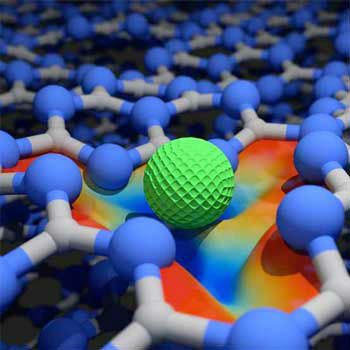|
NOVIDADES
Chemical engineers from ETH Zurich developed a new catalyst for forming a bond between two carbon atoms in a cost-effective and eco-friendly way. This technology could soon make its way into industry. The chemical industry produces not just valuable vitamins, pharmaceuticals, flavours and pesticides, but often a large amount of waste, too. This is particularly true of pharmaceutical and fine-chemical production, where the volume of desired product may be just a fraction of the volume of waste and unsaleable by-products of synthesis. One reason for this is that many chemical reactions make use of catalysts in dissolved form, as Javier Pérez-Ramírez, Professor of Catalysis Engineering, says. Catalysts are substances that accelerate a chemical reaction. In the case of dissolved catalysts, it often takes a huge amount of effort to separate them from the solvent and from the reaction products for reuse. Catalysts in solid form avoid this problem altogether.  “What makes the catalyst so efficient is that the palladium atom can move within the cavity to adapt to the process requirements while remaining trapped inside,” explains ETH Professor Javier Pérez-Ramírez. The palladium atom is shown in green. Image: ETH Zurich / Edvin Fako
Thus far, the process in commercial scale has widely used soluble palladium catalysts. Earlier attempts to attach the soluble catalyst to a solid body always resulted in relatively unstable and inefficient catalysts. Modeling of the catalyzed reaction (Video: ETH Zurich). “That means the new catalyst not only cuts the costs of synthesising fine chemicals, it also reduces the consumption of palladium and decreases the amount of waste,” Pérez-Ramírez says. The catalyst might soon be ready for use in industry: the scientists claim that it should be easy to scale up catalyst production and use from the laboratory. As the researchers point out, the use of graphitic carbon nitride as a solid catalyst is not limited to the Suzuki reaction. It should also be possible to populate the lattice with atoms of metals other than palladium in order to catalyse other syntheses. The ETH scientists will explore these possibilities in future research. They also plan to found a spin-off company to market this novel family of catalysts. ETH Zurich. Posted: Jun 26, 2018. |
|||||||||||||||||||||||||